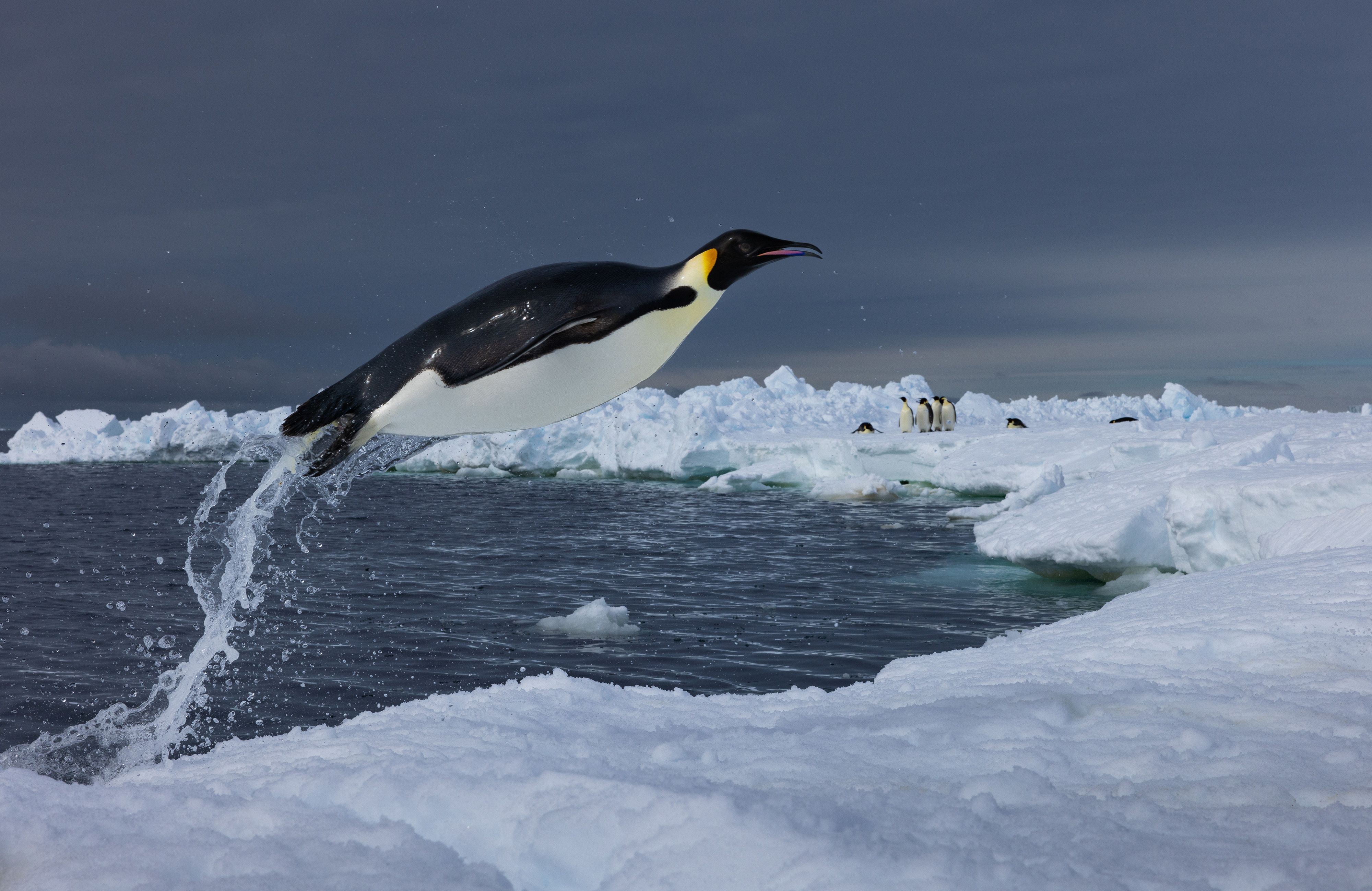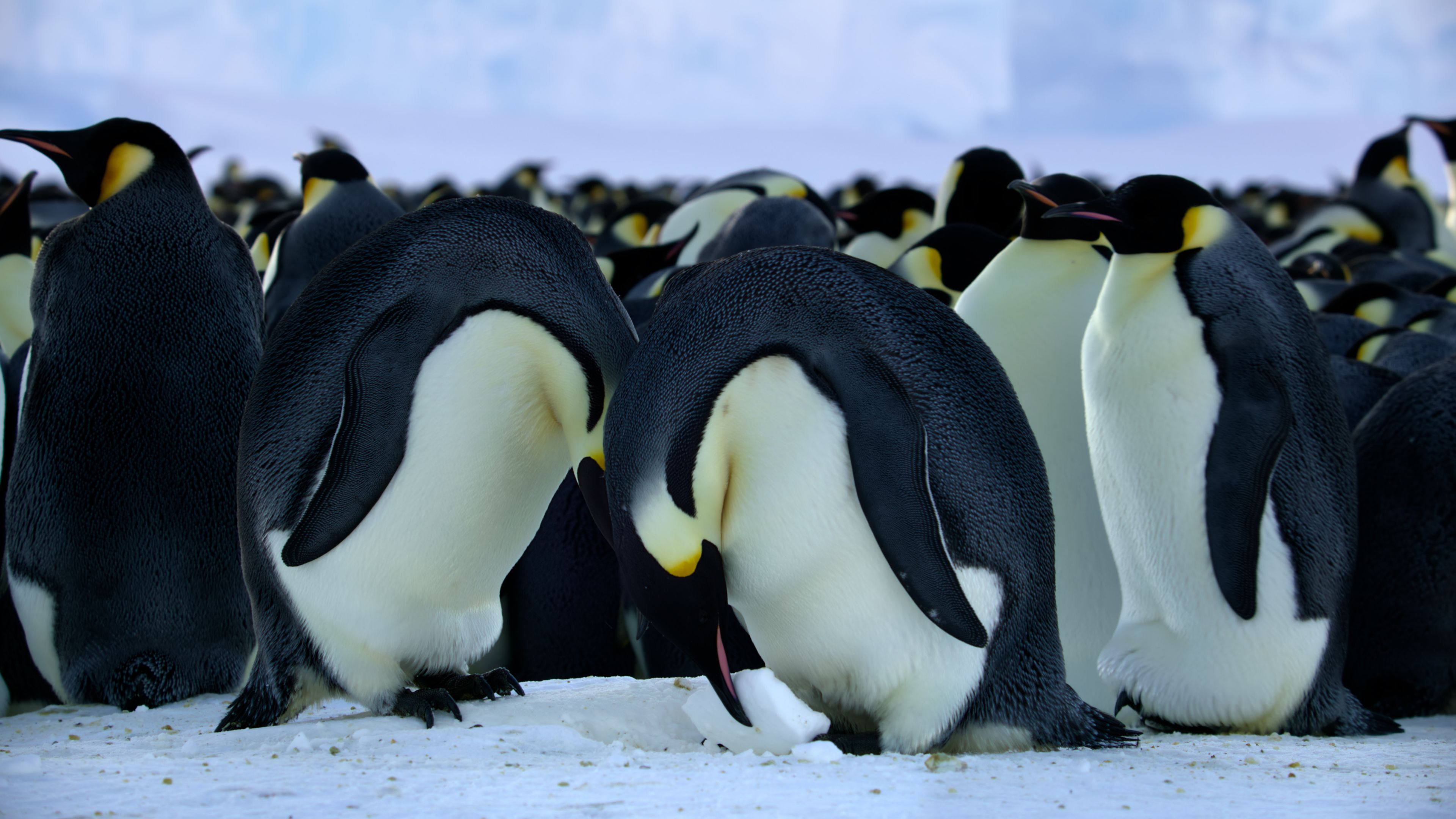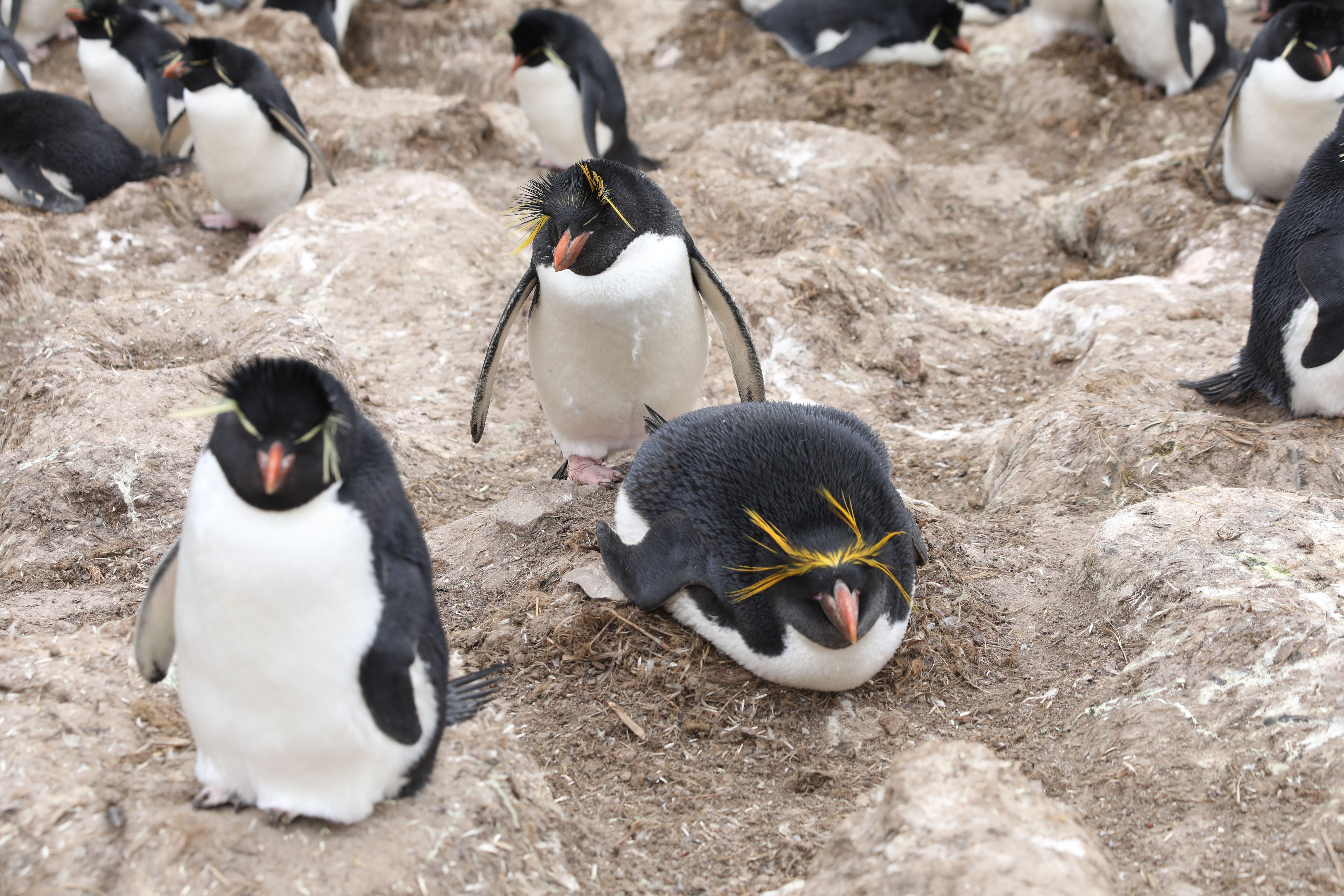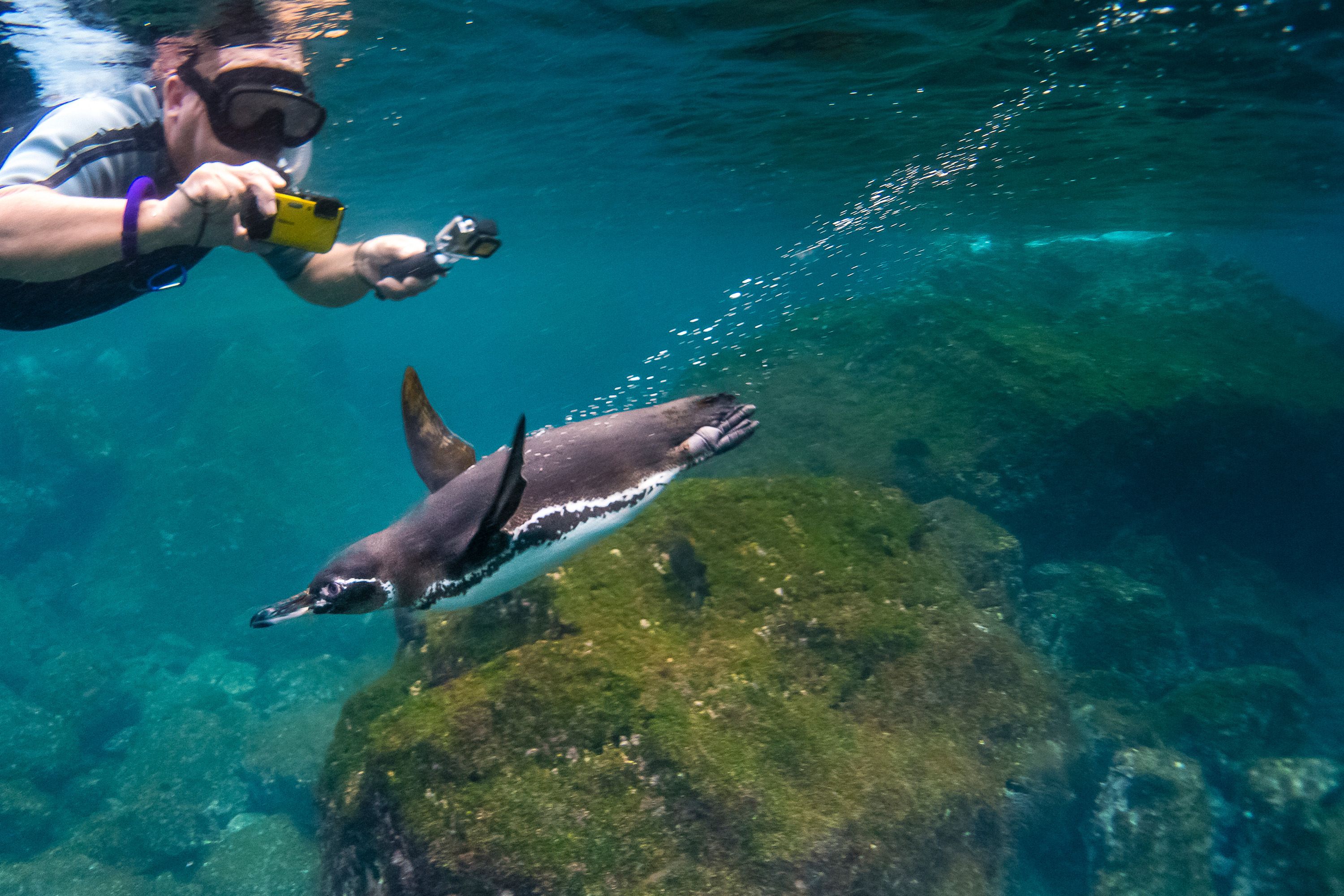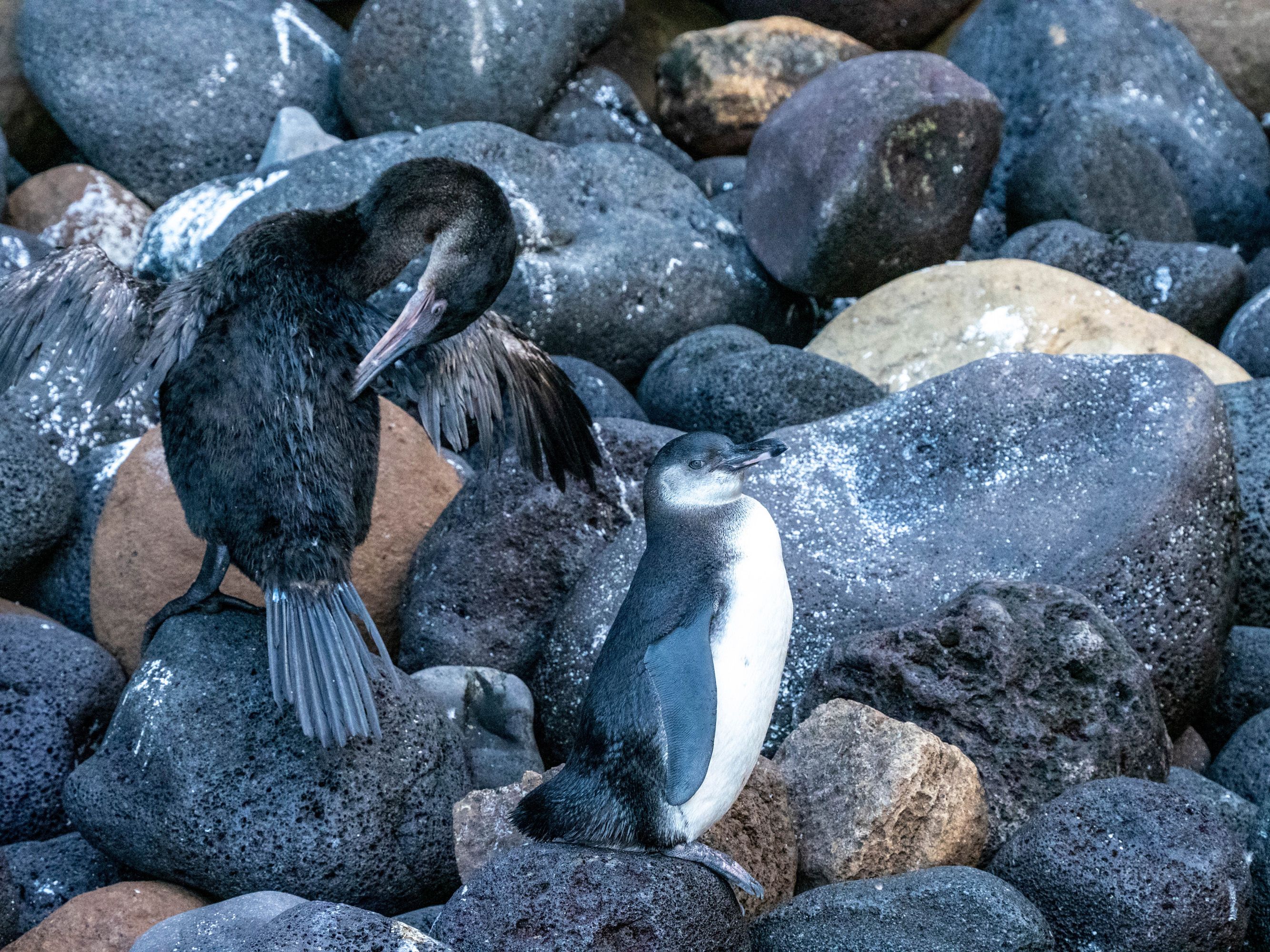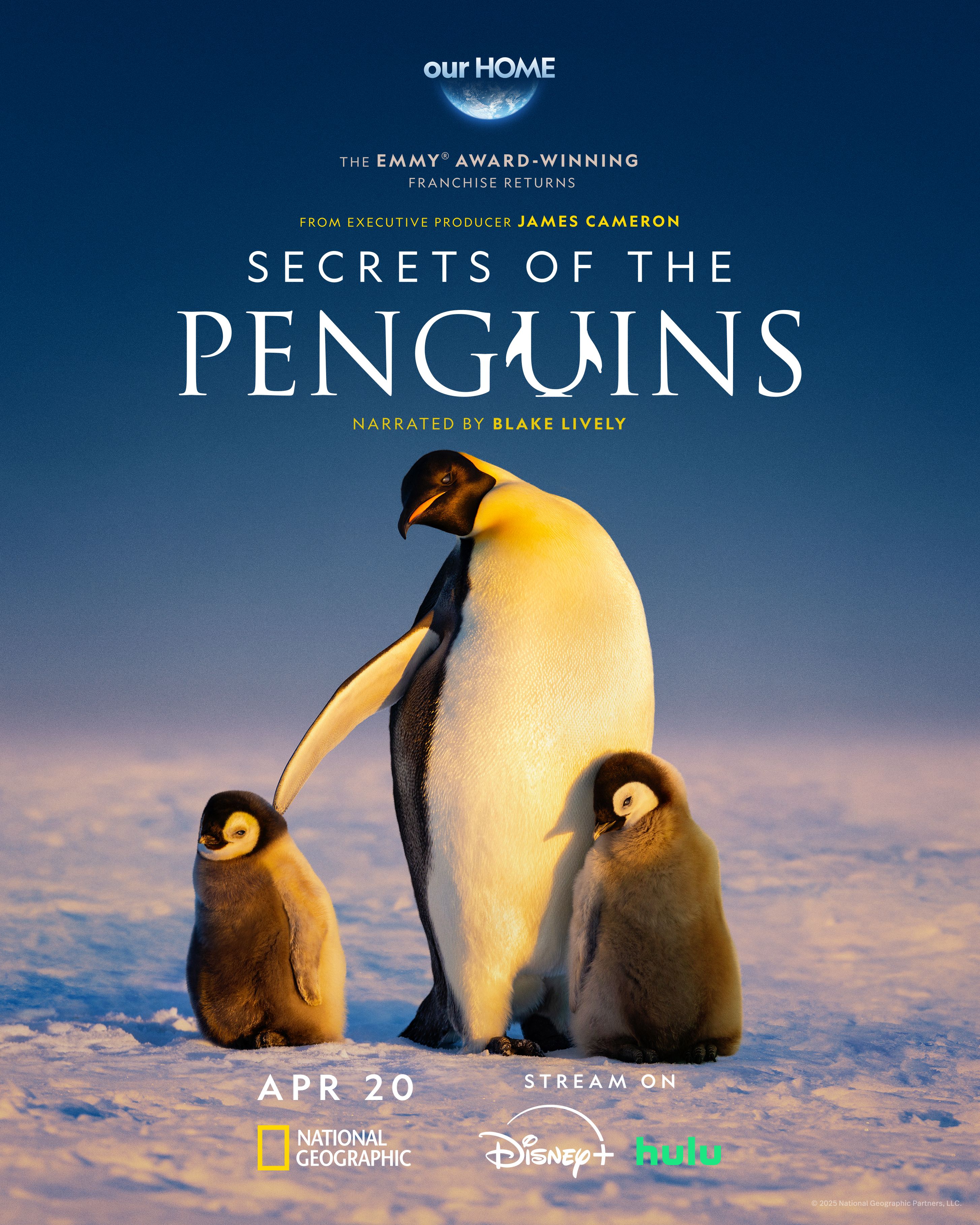National Geographic has built a reputation for unveiling hidden corners of the animal kingdom through its acclaimed “Secrets of” documentary series executive produced by James Cameron. From elephants and whales to the octopus, each chapter goes beyond the surface to deliver cinematic, intimate glimpses of life in the wild, occasionally revealing never-before-seen behaviors. Now, the latest installment explores some extreme corners of the planet with Secrets of the Penguins — and it’s already turning heads.
“If you call something Secrets of the Penguins, you set expectations pretty high,” says wildlife filmmaker and host Bertie Gregory in a conversation with ScreenRant last week. “I thought I knew penguins — and I was so wrong. Every time we spent time with them, just when I thought they’d hit their limit, they went and did something insane.”
The Secrets of the Penguins showcases surprising behavior, groundbreaking visuals, and unexpected emotional depth, making it more than just another wildlife doc. It’s a fresh, unflinching look at several of the 18 beloved penguin species that still have a lot of secrets left to share, and I experienced it in the best way possible – while exploring one of the locations where the three-episode Secrets of the Penguins series narrated by Blake Lively was shot. But more on that later…
Meet the Man Behind the Lens: Bertie Gregory
Emmy and BAFTA Award-Winning Nat Geo Explorer Teams With Award-Winning Talesmith Production Company
Bertie Gregory has quickly become one of National Geographic’s most recognizable filmmakers. Known for pushing the boundaries of wildlife storytelling, he brings both scientific knowledge and raw emotion to every project. And for following penguins, it helps that he’s willing to go where few others will.
“It was a real emotional rollercoaster filming this,” Gregory admits. “You get to know these individuals, you watch them grow up, you have some kind of bond to them. It’s very one-way — they obviously don’t care about us. I think they just think we’re a bit clingy. So then when they’re in parallel, they succeed. You really feel that. We want the viewer to feel that, and I have no doubt that the viewer will be going on an emotional rollercoaster watching each of these episodes.” Gregory’s relatability and awe-inspiring footage make him a perfect fit for a series as bold and intimate as Secrets of the Penguins.
The BAFTA Award-winning Nat Geo Explorer was not alone on this journey as it takes a small army and years of time to plan for and capture enough to assemble the three episodes of Secrets of the Penguins. “One of the best parts about my job is that, as well as getting to hang out with cool animals, I get to hang out with cool people. So this is an enormous team effort,” Gregory says of the research team at Talesmith who produced the series.
0:47
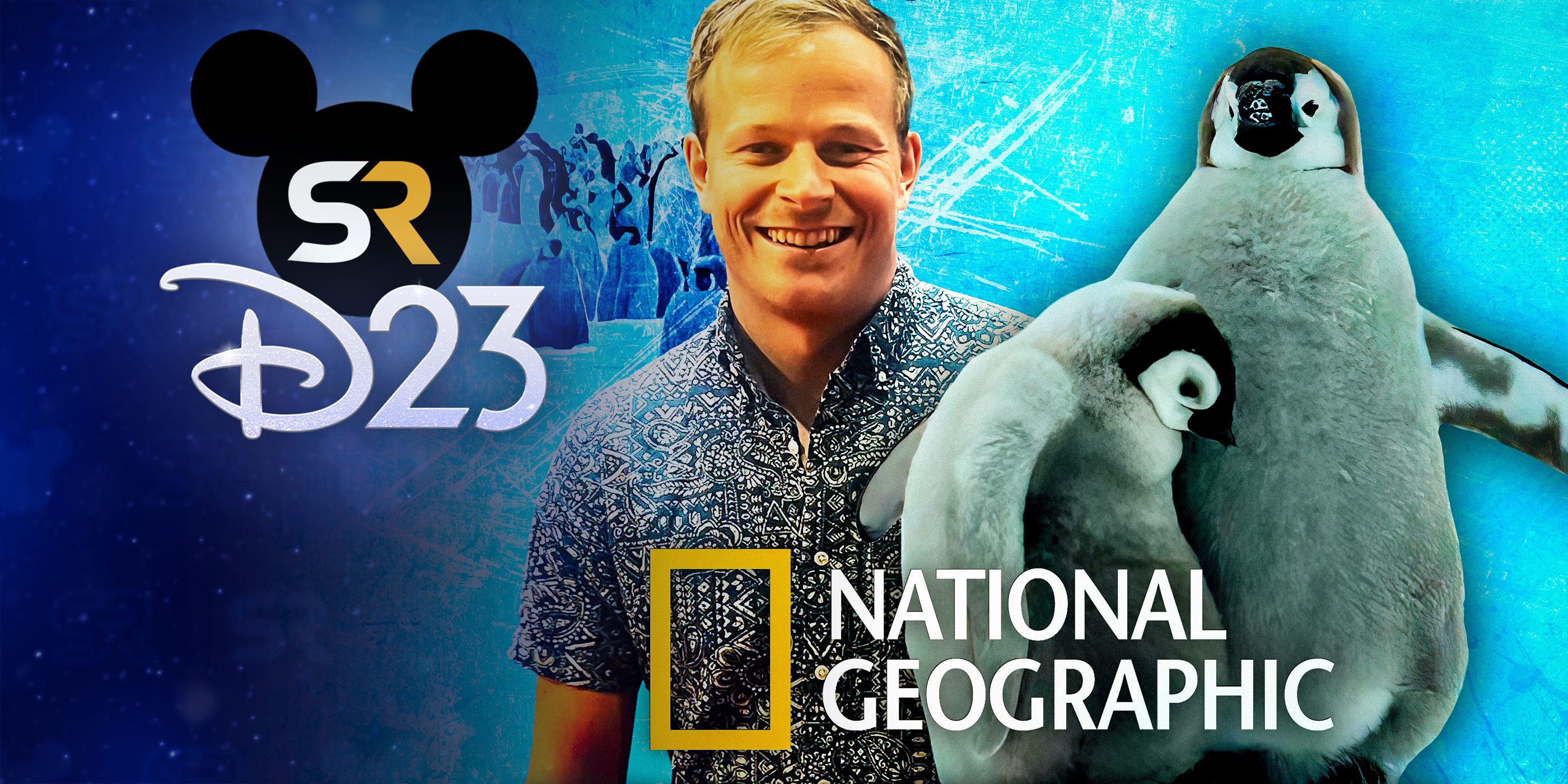
Related
Nat Geo Explorer Bertie Gregory Hypes Secrets Of The Penguins & Reflects On Animals Up Close at D23
Screen Rant visits the National Geographic Hexadome Experience at D23 and interviews explorer Bertie Gregory about Secrets of the Penguins and more.
Talesmith’s team of over 70 world-class scientists and filmmakers spent more than two years capturing various types of penguins and never-before-seen behaviors and hints of how they evolve to survive. “The reason that this series has so many brand new secrets in that have never been filmed before is because we had a ridiculous amount of time in the field,” Gregory explains of the Emperor penguins where he and his team did two shoots over two and a half months filming abandoned chicks just for the first episode. And on top of that a team of three stuck around for 274 non-stop days.
Bertie told me they rigged heated gloves powered by the camera system’s batteries to operate in the minus 30-40 temperatures. This and advanced batteries and lenses on their drones helped make filming key scenes in Antartica possible.
“They pretty much became penguins, but it was a huge sacrifice for them personally. But that’s the reason that the film is so magical and intimate because they literally were with the penguins for their whole life cycle,” adds Gregory. Expertise coupled with cutting-edge camera technology and sheer commitment was the only way National Geographic was able to see and capture the unseen when it came to penguins and their remote or dynamic habitats.
Why Penguins, Why Now?
Filming the Impossible: Two Years in the Wild
Penguins are no strangers to the screen, but the Secrets of the Penguins series reveals their urgent relevance in today’s environmental landscape. Far from being simple comic relief, penguins are key indicators of ocean health, making their survival deeply tied to our own.
“Penguins are indicators of ocean health, and we humans need healthy oceans for our own existence,” Gregory explains. “Even though penguins live far from us, we are connected to them — we’re all connected by the oceans.”
By focusing on multiple species across different climates, the series underscores not just their diversity but also the threats they face — from melting ice caps to disappearing food sources. The first episode shows how chicks can take risks to survive and how adult penguins can practice for the most important moment in their lives on the Ekström Ice Shelf in Antarctica. Episode 2 showcases the adaptive behaviors to hunt for food and work as a team in the opposite climate in the Galápagos Islands. Episode 3 shows something else entirely which may pave the way for the future of penguin species. And there’s so much more in between.
Creating Secrets of the Penguins was no easy feat. Filming took place over two years across some of the harshest environments on Earth, requiring the crew to endure subzero storms, broken equipment, and six-day blizzards. The first episode will show these extreme conditions, but what you won’t see on screen is how bad it really got for Bertie and the crew.
“What isn’t in the film is what happened next, which was most of our tents ripped. It was so windy, and they filled up with snow. And so we ran away to our emergency set-up, which was these two old shipping containers which used to be part of an old South African research kind of station. And these two shipping containers just stood on the ice. And so we jumped in them, swung the door shut, and sat in them for the following six days waiting for this storm to pass. And the whole time we were hungry and cold and bit miserable. And then I was like, hang on, these little penguin chicks have been stood out in this for all those six days, just frigging taking that storm, which is pretty wild if you think about it. And yeah, that’s just so tough.”
That commitment to being on location in the most extreme moments is part of what gives the series its breathtaking authenticity.
Snowballs, Caves, and Cliff Dives: Penguin Behavior You’ve Never Seen
Secrets of the Penguins Revealed
Just when you think you’ve seen it all, Secrets of the Penguins reveals behaviors that redefine our understanding of these creatures. One of the most jaw-dropping moments? Emperor chicks leaping off a 50-foot ice cliff to take their first swim.
“I spotted several hundred emperor chicks marching to the edge of this cliff,” Gregory recalls. “I thought, ‘There’s no way they’re going to go off there.’ But they did. That moment became the closing of our first episode — and the beginning of something really special.”
“If you think you know penguins, you don’t.”
Other discoveries include Galápagos penguins stealing fish straight from the mouths of brown pelicans and working together to corral prey through volcanic lava cracks. It’s clever, coordinated, and previously undocumented. “It’s not about working harder, it’s about working smarter,” Gregory says. “It’s proper David and Goliath stuff.”
Behaviors captured for Secrets of the Penguins
- Emperor penguins practicing egg transfers with a snowball.
- Emperor chicks navigating extreme icy weather conditions alone, using their beaks to climb, and diving off an ice shelf.
- Hybrid penguin chicks born from rockhopper and macaroni penguins (appropriately nicknamed “rockaroni” chicks).
- A rockhopper penguin battling off a sea lion.
- The first footage of a hidden cave colony of African penguins.
- Galapagos penguins stealing fish from brown pelicans.
- Galapagos penguins teaming up to corral fish.
From Antarctica to the Galápagos: Penguins in Every Climate
Science Meets Spectacle
Forget what you think you know. Penguins don’t just live in icy landscapes — they thrive in deserts and volcanic tropics.
“There are 18 different species of penguins,” Gregory notes, “and some of them live on tropical volcanoes covered in cactuses. Most people don’t picture that when they think ‘penguin.’”
The series spans continents and climate zones, offering a visual feast that constantly surprises. By featuring a range of penguin habitats, the show paints a fuller picture of the species’ adaptability — and the challenges they face. Secrets of the Penguins takes viewers to Cape Town, South Georgia Island, the Galapagos Islands, Namibia, and, of course, Antarctica.
“Our human success is so intricately tied to the success of penguins.”
Nature documentaries often face a tricky balance: respecting scientific accuracy while crafting a compelling story. For Gregory and his team globetrotting across the world to capture penguins, the answer was adaptability.
“Penguins don’t read scripts, which is enormously frustrating,” he laughs, “but if you put the time in, they give you these nuggets you could never have expected.”
The team operated with minimal crews and a wide range of gear, ready to follow wherever the story went. One storyline following the Galapagos penguins for episode 2, for instance, didn’t fully come together until the edit. “They do this amazing corralling behavior to hunt fish more efficiently,” says Gregory. “Filming it was chaotic, but once we cut together the underwater, surface, and aerial shots, it was like, ‘Wow.’ It very clearly shows what they’re doing.”
In the second episode with the Galapagos Penguins as well as stealing from the Pelicans, they also do this amazing kind of corralling behavior where they work together as a team to push a ball of fish, like concentrate it and then push it to the surface because they’re free diving when they’re eating. So if it’s near the surface, they can eat a lot more efficiently because they don’t have to hold their breath as long. There’s this behavior where they break part of the ball off and then chase it into the shallows and they hunt it in amongst the kind of cracks in the lava rock and really use that lava landscape to their advantage. And we kind of film that, and every time it happened, it happens so fast because they’re such speed demons and keeping up with them in really shallow water is really hard because you’re smashing the camera on the rocks and trying to kick really hard. The penguin are much quicker and better in the water than I am.
“You’re never really sure when it all comes together, whether it’s going to work because filming it underwater and from water level and from the air at the same time,” says Gregory on the complexities of being just one of multiple camera people chasing unpredictable behaviors. “That was really cool to see it kind of come together when the camera angles were put together in the edit.”
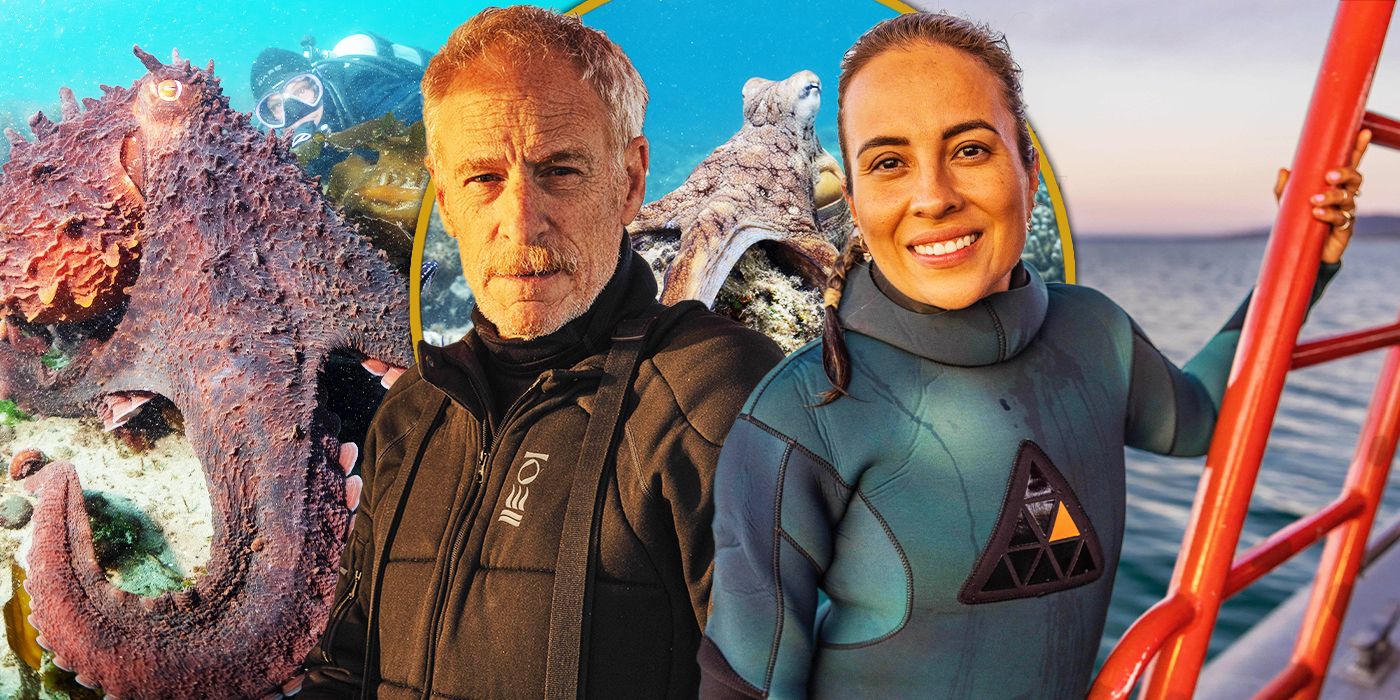
Related
Secrets Of The Octopus Filmmakers Answer Whether Octopuses Could Rule The World & Other Burning Questions
Screen Rant interviews National Geographic Explorer Alex Schnell and executive producer Adam Geiger about the Secrets of the Octopus series.
The series opens in the heart of Antarctica with the first episode, where viewers are introduced to the harsh world of emperor penguins. Here, survival is a daily battle, and every victory feels monumental.
“We were with the chicks for about two months. They left the colony, marched to the ocean, came down onto the sea ice, and then we had about four or five hours at the edge of the sea ice while they thought about getting in the sea. Some of ’em did, but most of ’em didn’t. And then the sea ice started to break up, so it was too dangerous for us to be there, so we had to leave and go to more stable ice. So we thought we were done. The film, the opening episode did not have an ending, which is a big problem. And I was literally flying the drone around because we were bored and trying to figure out what on earth we were going to do because we couldn’t get to where the chicks were. And I literally flew around a corner and found that scene of several hundred chicks standing at the edge of that giant cliff, and I was like, huh, I think I know what we’re doing now.”
“That cliff dive? That was our ending scene,” says Gregory. “But it became the start of something bigger — the moment I knew we weren’t just making another penguin documentary. We were making something really special.”
National Geographic’s Message of Conservation
You Can Explore, Learn, and Make a Difference, And Nat Geo Can Take You There
At its core, Secrets of the Penguins is more than a wildlife documentary—it’s a reminder of how closely human existence is tied to the health of the planet, even in the farthest corners like Antarctica. For Bertie Gregory, penguins aren’t just endearing camera subjects that can surprise you; they’re powerful indicators of ocean health.
“Penguins are indicators of ocean health, and we humans need healthy oceans for our own existence,” Gregory said to us over a Zoom call while I was aboard the National Geographic Endeavour II exploring the Galápagos Islands with Lindblad Expeditions. “Even though penguins, most of them, live very far from where we live, we are connected to them because we’re all connected by the oceans. Our human success is so intricately tied to the success of penguins.”
National Geographic-Lindblad Expeditions offers a life-changing Galapagos Islands expedition cruise tour led by National Geographic experts which I experienced, encountering wildlife while hiking, snorkeling, and kayaking, including of course, the impressively nimble Galapagos penguins.
Through the intimate, high-stakes stories of penguin survival across multiple continents, Secrets of the Penguins urges viewers to reflect on their role in the broader ecosystem. “I hope people come away from the series pumped and inspired by penguins,” Gregory says, “and realize that in your day-to-day life, you can do things that help penguins and also help humanity… whether that be the food you buy, the car you drive, the clothes you wear. All of it has an effect. And that can be positive or negative.”
Executive producer James Cameron echoes that ethos, emphasizing the power of observation and storytelling meeting science in sparking real change. “You’re not just looking, you’re recording. And so those images become data,” he explains. “That’s what’s exciting to me about all these shows. When we go into the deep ocean, everything that we see, everything that we record, becomes part of the science of understanding.”
We think we’re the center of the universe, but there’s so much that’s happening we’re not even party to. And to have that privilege of being able to witness it and film it and bring it back and share it, I think there’s nothing like it. Personally, it’s what drives me to do the deep ocean dives.
Cameron also believes wonder, fueled by what you will see on screen in this series and what I experienced in real life with National Geographic-Lindblad Expeditions, leads to action. That starts with seeing nature through a curious lens, wherever you are. “Watching a program like Secrets of the Penguins prompts wonder and curiosity you can act on and apply,” he says. “Go out with your kids into a field and find bugs. Even on a city street, there’s nature. You only have to look.”
Both Gregory and Cameron hope Secrets of the Penguins will not only dazzle audiences with never-before-seen footage, but also empower them with a renewed sense of environmental responsibility—one that starts not in Antarctica or in the Galápagos archipelago, but at home.
Where to Watch Secrets of the Penguins
Enjoy all three episodes of National Geographic’s Secrets of the Penguins now!
Secrets of the Penguins premiered on National Geographic and is available on Hulu and Disney+.
As for what’s next from Disney and Nat Geo’s Secrets Of series and Bertie Gregory, he has ideas. “There are some,” Gregory tells us at the end of our conversation. “But if I told you much more, Mickey Mouse would probably hunt me down. So I’ll leave you with that.”
